Whistler, Canada

Whistler, Canada
More Posts from Smparticle2 and Others

This car race involved years of training, feats of engineering, high-profile sponsorships, competitors from around the world and a racetrack made of gold.
But the high-octane competition, described as a cross between physics and motor-sports, is invisible to the naked eye. In fact, the track itself is only a fraction of the width of a human hair, and the cars themselves are each comprised of a single molecule.
The Nanocar Race, which happened over the weekend at Le centre national de la recherché scientific in Toulouse, France, was billed as the “first-ever race of molecule-cars.”
It’s meant to generate excitement about molecular machines. Research on the tiny structures won last year’s Nobel Prize in Chemistry, and they have been lauded as the “first steps into a new world,” as The Two-Way reported.
Microscopic Cars Square Off In Big Race
Image: CNRS




Snowflakes from William Scoresby’s des Jüngern Tagebuch einer reise auf den Wallfischfang, (Hamburg: F. Perthes, 1825), the German translation of Journal of a voyage to the northern whale-fishery.
Scoresby was an Arctic explorer with interests in meteorology and navigation, who led an Arctic exploration in the early 1800s to the area around Greenland.


Fluid systems can sometimes serve as analogs for other physical phenomena. For example, bouncing droplets can recreate quantum effects and a hydraulic jump can act like a white hole. In this work, a bathtub vortex serves as an analog for a rotating black hole, a system that’s extremely difficult to study under normal circumstances. In theory, the property of superradiance makes it possible for gravitational waves to extract energy from a rotating black hole, but this has not yet been observed. A recent study has, however, observed superradiance for the first time in this fluid analog.
To do this, the researchers set up a vortex draining in the center of a tank. (Water was added back at the edges to keep the depth constant.) This served as their rotating black hole. Then they generated waves from one side of the tank and observed how those waves scattered off the vortex. The pattern you see on the water surface in the top image is part of a technique used to measure the 3D surface of the water in detail, which allowed the researchers to measure incoming and scattered waves around the vortex. For superradiance to occur, scattered waves had to be more energetic after interacting with the vortex than they were before, which is exactly what the researchers found. Now that they’ve observed superradiance in the laboratory, scientists hope to probe the process in greater detail, which will hopefully help them observe it in nature as well. For more on the experimental set-up, see Sixty Symbols, Tech Insider UK, and the original paper. (Image credit: Sixty Symbols, source; research credit: T. Torres et al., pdf; via Tech Insider UK)

Faster, smaller, more powerful computer chips: Hafnia dons a new face
Materials research creates potential for improved computer chips and transistors
It’s a material world, and an extremely versatile one at that, considering its most basic building blocks – atoms – can be connected together to form different structures that retain the same composition.
Diamond and graphite, for example, are but two of the many polymorphs of carbon, meaning that both have the same chemical composition and differ only in the manner in which their atoms are connected. But what a world of difference that connectivity makes: The former goes into a ring and costs thousands of dollars, while the latter has to sit content within a humble pencil.
The inorganic compound hafnium dioxide commonly used in optical coatings likewise has several polymorphs, including a tetragonal form with highly attractive properties for computer chips and other optical elements. However, because this form is stable only at temperatures above 3100 degrees Fahrenheit – think blazing inferno – scientists have had to make do with its more limited monoclinic polymorph. Until now.
Read more.








Glowing crystals can detect, cleanse contaminated drinking water
Tiny, glowing crystals designed to detect and capture heavy-metal toxins such as lead and mercury could prove to be a powerful new tool in locating and cleaning up contaminated water sources.
Motivated by publicized cases in which high levels of heavy metals were found in drinking water in Flint, Mich., and Newark, N.J., a science team led by researchers at Rutgers University used intense X-rays at Lawrence Berkeley National Laboratory (Berkeley Lab) to probe the structure of the crystals they developed and learn how they bind to heavy metals.
The crystals function like miniature, reusable sensors and traps, and are known as luminescent metal-organic frameworks, or LMOFs.
Top performer for detecting and trapping heavy metals
One type of LMOF that the team tested was found to selectively take up more than 99 percent of mercury from a test mixture of heavy and light metals within 30 minutes, according to recent results published in Applied Materials and Interfaces. No other MOFs have performed as well in this dual role of detecting and capturing, or “adsorbing,” toxic heavy metals, the team reported.
Read more.
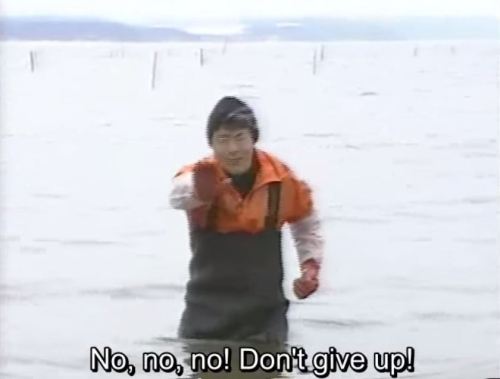
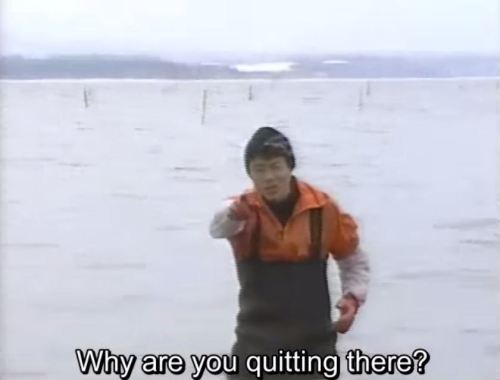
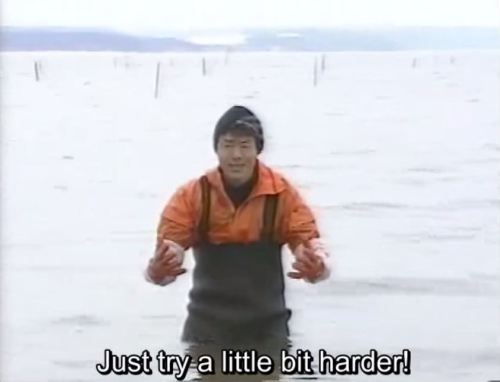

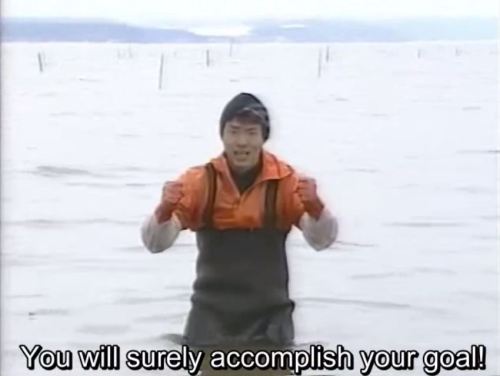
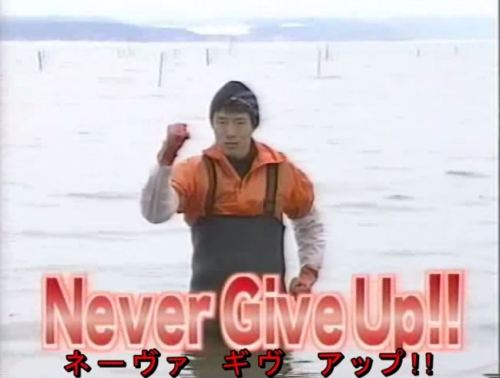

On this day in 1996, then-World Chess Champion Garry Kasparov makes his first move in the sixth game against Deep Blue, IBM’s supercomputer. Kasparov emerged the victor, winning three games, drawing in two, and losing one.
via reddit


You are the center of wonderland & Keep the last glow in mind by Jana Luo

-
 l-oiseau-bleu liked this · 3 months ago
l-oiseau-bleu liked this · 3 months ago -
 peter-1952 liked this · 4 months ago
peter-1952 liked this · 4 months ago -
 unfriendlyorifice liked this · 4 months ago
unfriendlyorifice liked this · 4 months ago -
 foryoureyesonlysstuff reblogged this · 4 months ago
foryoureyesonlysstuff reblogged this · 4 months ago -
 wheathead74 liked this · 1 year ago
wheathead74 liked this · 1 year ago -
 toolguy22 liked this · 1 year ago
toolguy22 liked this · 1 year ago -
 wiracochassfun liked this · 1 year ago
wiracochassfun liked this · 1 year ago -
 jeremylawson reblogged this · 1 year ago
jeremylawson reblogged this · 1 year ago -
 moggzz liked this · 1 year ago
moggzz liked this · 1 year ago -
 dogger38 liked this · 1 year ago
dogger38 liked this · 1 year ago -
 ghettoems liked this · 1 year ago
ghettoems liked this · 1 year ago -
 primative-man reblogged this · 1 year ago
primative-man reblogged this · 1 year ago -
 rebelmotorhead liked this · 1 year ago
rebelmotorhead liked this · 1 year ago -
 jeremylawson reblogged this · 1 year ago
jeremylawson reblogged this · 1 year ago -
 sweetnightmareposts liked this · 3 years ago
sweetnightmareposts liked this · 3 years ago -
 anonymug liked this · 3 years ago
anonymug liked this · 3 years ago -
 lauraatulsa reblogged this · 3 years ago
lauraatulsa reblogged this · 3 years ago -
 lauraatulsa liked this · 3 years ago
lauraatulsa liked this · 3 years ago -
 pruneliere liked this · 3 years ago
pruneliere liked this · 3 years ago -
 floatingstories reblogged this · 3 years ago
floatingstories reblogged this · 3 years ago -
 n3v3r3v3rrr reblogged this · 4 years ago
n3v3r3v3rrr reblogged this · 4 years ago -
 wildernestt reblogged this · 4 years ago
wildernestt reblogged this · 4 years ago -
 wildernestt liked this · 4 years ago
wildernestt liked this · 4 years ago -
 alterego27 reblogged this · 4 years ago
alterego27 reblogged this · 4 years ago -
 stormwing119 liked this · 4 years ago
stormwing119 liked this · 4 years ago -
 bluevelvetbikini reblogged this · 4 years ago
bluevelvetbikini reblogged this · 4 years ago -
 bestbewakingup reblogged this · 4 years ago
bestbewakingup reblogged this · 4 years ago -
 raivenrambles reblogged this · 4 years ago
raivenrambles reblogged this · 4 years ago -
 raivenrambles liked this · 4 years ago
raivenrambles liked this · 4 years ago -
 wi-cked reblogged this · 4 years ago
wi-cked reblogged this · 4 years ago